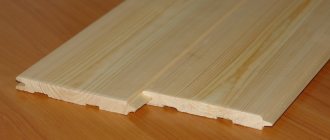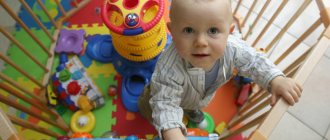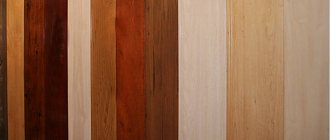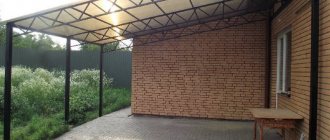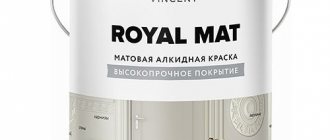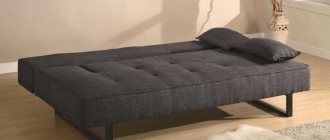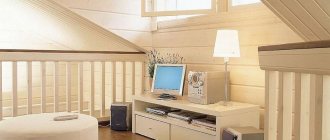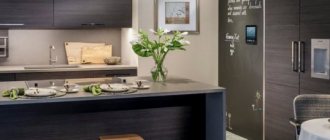Boards are traditionally associated with wood products. In fact, the first samples were made from stone and baked clay. Such tablets were not used in the design of houses, but played the role of information plates on which important data was stored for posterity. In everyday life, slate, magnetic, cutting, ironing and chalk boards are used. More than three centuries ago, the first circular saw was invented. With its help, it was possible to expand the production of boards to an industrial scale. The unit replaced the impractical pit saws that were previously used in sawmills. Boards have been used in interiors since ancient times, when man learned to process wood. Moreover, they were used both as rough finishing and as decoration. Previously, the material was valued primarily because of its cheapness and availability. Now priorities have changed and people are more attracted to wooden boards by their environmental friendliness, since it is becoming increasingly difficult to find something natural on the market of high-quality imitations. As for availability, the use of rare, valuable breeds has become fashionable, so it’s difficult to call them cheap. Although simple pine has managed to maintain its niche in the market, it is used only in the most unassuming interiors. Let's talk further about how to properly decorate surfaces in the house with boards.
Fashion or tradition?
Stylish design solutions are undoubtedly dictated by fashion. This lady, as you know, is very capricious and in a couple of years can raise and overthrow materials, colors and entire trends. However, there are paradoxical things that do not obey fashion trends and remain “out of time.” The habit of using them is so deeply ingrained in a person’s mind that he simply cannot give them up. The boards can be described as a “fashionable tradition”. The material became popular due to the demand for a number of styles in which it is used, but it was never forgotten. Wood, like brick and stone, has never left the interiors of houses and apartments due to established tradition. More practical and human-friendly materials have not yet been invented. Imitations are actively being created (even of high quality), but the original is always a step above skillful fakes. The board, as a geometric object, thanks to its universal shape, can easily fit into any interior composition.
Aged boards are of particular value to designers, as the use of rarities and antiques is now popular.
Types of finishing boards
The boards are used in finishing walls, floors and ceilings. Depending on the processing technology and characteristics, they are classified into the following types:
- Lining. Used for external and internal decoration. The lining consists of thin sheets that are connected to each other using the tongue-and-groove principle. The material can be made from wood, waste wood (MDF) or plastic. Depending on the profile, the lining is divided into types: American, standard, calm, euro.
- Imitation of timber. This species has only recently begun to be considered as an independent species. Previously, it was classified as a subgroup of lining. Imitation timber is made from carefully dried wood and has an impressive thickness. It is difficult for the average person to distinguish this finishing material from the original, since it thoroughly repeats its texture.
- Terrace boards. They are made from a composite of wood and polymers. The material is used for finishing terraces. Due to its location, the board is subject to strict requirements for strength and stability. The material must be treated with special compounds, and grooves are applied to its surface, which reduce slipperiness and help cope with additional loads in the form of temperature changes and changes in humidity levels.
- Block house. It is a board with a semicircular front side. Four blockhouse boards are cut from one log, and the core is processed into ordinary lining.
- Planken or facade board. The material is mainly used in the exterior. In many ways, planken is similar to decking boards. The fragments are secured to each other in two ways: end-to-end and overlapping. Regardless of the technique, a technological gap is always maintained between the modules, which ensures air circulation.
- Parquet board. Multilayer material used for floor finishing. It is made from several sheets of wood, which are covered with a protective film. The closest “relative” and competitor of parquet boards is laminate. It is less capricious, although it is made according to a similar principle.
Scope of use of brushing technology
The accessibility and stunning decorative effect of the brushing technique make it very popular in the manufacture of interior items and other details in the design of premises.
Shelves, columns, ceiling beams, wall panels, fireplace trims, made of intentionally aged wood, add special charm and color to halls and living rooms, kitchens and restaurants.
Furniture made of wood with brushed elements looks very elegant.
Material touched by bark beetle is especially valuable, since such a texture cannot be reproduced by hand, but it is precisely this that creates the absolute impression of antiquity of a wooden product.
The brushing technique is an ideal and affordable way to create an impeccable interior with a colorful country or vintage style. Structured wood objects will fill the house with natural motifs, a special atmosphere of warmth and comfort, and will become a highlight in the overall design.
Brushed lining appeared on the finishing materials market relatively recently, but immediately gained incredible popularity. What is special about this type of finishing, where is it used, and is it possible to reproduce its technology at home? In today's material I will answer all these questions.
Due to its decorative qualities, brushed lining is widely used in many interiors.
Application options
Board is a universal material. It is used for finishing all surfaces inside and outside the house without restrictions. Modular elements made of wood look original in the premises and are in harmony with modern lofts, chalets, Art Deco and lighter Provence. A number of ethnic interiors, country and rustic, Scandinavian, eco style cannot do without this material at all.
Wall decoration
The board is suitable for budget and luxury wall decoration. For covering surfaces in elite styles, it is recommended to choose wide and thick lining. Painting the material will give the room coziness and make it more homely. You can experiment with laying ordinary boards: attach them in a herringbone pattern, diamond patterns, diagonally, or create entire mosaics from rich wood shades. Rough, poorly processed surfaces are ideal for country interiors, while smooth ones are suitable for more formal styles. Painting with an ombre effect will create a unique color scheme due to gradient shade transitions.
Ceiling finishing
The ceiling is also covered with boards, although traditionally this surface is decorated with white plaster. In spacious rooms you can preserve the natural color of the wood. In cramped rooms with low ceilings, it is better to resort to painting in light shades. The combination of board and plaster surfaces separated by ceiling beams looks unique. Similar chalet-style options are used. To decorate the surface of the ceiling, they use lining, edged boards, narrow slats, and a special set of modular elements similar to parquet, but decorated with a layer of veneer on the front side. Since the material dominates the interior, it is recommended to combine it with plaster and simple wallpaper without flashy patterns.
Flooring
Laminate, parquet and modern engineered boards are used to finish the floor. These materials are considered elite and outperform linoleum and carpet. Parquet is only suitable for hallways, living rooms, bedrooms and children's rooms. It is not recommended to lay it in rooms with an aggressive microclimate: kitchens and bathrooms. Laminate is less selective and adapts perfectly to special conditions. Engineered board is a relatively new finishing material. It is similar to its parquet counterpart, but consists of two layers: the outer layer is made of valuable species and the inner layer is made of high-quality plywood. A number of manipulations can be carried out on floors covered with engineered wood: sanding, painting, processing. As a result, the surface becomes as similar as possible to solid wood.
Other Applications
The material is widely used in decorating furniture surfaces and large interior objects. The latter include partitions, false walls, doors, bar counters. Podiums are covered with boards, which become the conventional center of any room and invariably attract everyone's attention. Furniture made from this material looks very original. Boards are used to decorate sofas, chairs, armchairs, coffee tables, chests of drawers and shelves. Such furniture looks organically in eco-interiors and rooms decorated in Scandinavian, Provence, and country style. To highlight the naturalness of the decor, the walls are covered with photo wallpapers with themed forest landscapes. A set made of thermal wood will bring special warmth to the kitchen environment. A high headboard is made from rough “barn” boards. An original interior object will become a decoration of the Scandinavian style and can be perfectly combined with other natural elements: deer antlers, animal skins or decor made from real twigs.
Furniture made from planks looks organic not only in the interiors of houses. It can become a replacement for garden elements if the set is installed on a terrace, backyard or in a gazebo or bathhouse.
Parquet brushing technology
The effect of “artificial aging” is achieved by removing soft fibers from the top layer of wood with special metal brushes (from the English Brush - brush, hence the name of the method - brushing). The result is a surface with a relief of clearly defined growth rings and woody veins. This method emphasizes the natural beauty and texture of the wood. Aged wood looks elegant and noble, emphasizing the naturalness of the floor covering.
Brushed parquet boards are made from soft and medium-soft wood species, in which the boundaries of growth rings are clearly visible (for example, oak, ash, walnut, larch, merbau, kempas, wenge, jatoba). Brushing is not used for beech, maple, pear, alder, cherry, teak. This is due to the fact that the wood of these plants is either too soft or does not have a pronounced pattern of annual rings.
The most suitable material for brushing is, of course, oak. Aged oak itself is already a work of art. No other type of wood gives such an amazing effect when brushed. And although oak itself does not particularly fit the definition of “soft” wood, and brushing oak parquet is a rather complicated process, such processing gives an amazing result.
Recommendations for design
The board is added to the interior in strict dosages. There must be balance in the environment. This is especially important regarding the old board, which looks a little gloomy. To prevent the decoration from seeming jaded, it is recommended to follow simple rules:
- It is better to use boards to make only two or three large interior objects or to decorate only one accent wall with them. Do not sheathe the perimeter of the room with this material.
- If the planks are used in furniture, then the optimal background for them will be brickwork. In a loft setting, rough elements will look especially colorful.
- Combine wood with modern materials and expensive textiles. Then the interior will be stylish and not outdated.
- Pay attention to the width, thickness of the board, its texture and color. These characteristics must correspond to the overall stylistic concept.
In which room and how to decorate
In large living rooms, it is recommended to cover entire accent walls with old boards. Against such a background, modern furniture with expensive textiles will look original. The contrast between the cracks and wear of reclaimed wood and the elegant, rich surfaces will add a special touch to the decor. In the kitchen, boards are used to make furniture facades, stools, chairs and sometimes countertops. In combined versions, partitions are decorated with the material. In the interior of an office, it is recommended to cover the “library corner” with boards - a place for internal concentration, where you can get into the mood for work. In the bedroom, the material is used to decorate part of the wall, ceiling, head of the bed, bedside tables or dressing table. To emphasize these elements, it is recommended to add decorative lighting in the form of light bulbs around the perimeter of the room or carefully disguised devices located in close proximity to accent details.
Washing machine in the bathroom interior:
Of great importance is not only the ability to fit a washing machine into a limited square meter, but also the ease of its operation. The type of appliance you have will play an important role in this matter. There are different techniques for front-loading and top-loading machines. Let's talk about them in more detail.
Tips for front type washing machine:
It all depends on how small the room is allocated for a bathroom or toilet. In each case, the decision will be individual, but general recommendations exist. You can place the washing machine if it has a front loading:
- Under the sink. In this case, you need to choose flat sinks or lily pad sinks with a horizontal mixer. The solution is suitable for people of average and above average height, since in this case the sink will be located slightly above a comfortable level. The standard height of the washing machine is 85 cm. The height of the sink is from 15-20 cm. It is worth adding a small technological gap here, at least 5 centimeters. And it turns out that the sink will be at a level of 105-110 cm from the floor. At the same time, the width of the sink allows you to carefully install a machine under it, either 40 or 60 cm deep;
Washing machine under the sink in the project in the Flagman residential complex
- Put the car in a closet or rack. This solution is suitable both for built-in household appliances, which have a system for fastening facades, and for the most ordinary models. In this case, the cabinet performs a camouflage function, and the machine does not violate the overall concept of the interior;
Household appliances can hide in the closet. The whole project is here.
- Combine with a common countertop . In this case, the façade of the washing machine remains visible, but it fits into the interior thanks to a vertical box and a countertop on which a sink can be placed, and next to it there can be a cabinet or shelves;
More photos at the link.
- Hide the washing machine in a niche . The width of the machine will be strictly regulated by the dimensions of the niche. It’s easier with narrow washers of 40 cm, but more difficult with standard full-size washers of 60 cm. At the same time, the niche can be left open, or it can be closed with curtains, blinds, hinged and sliding doors with facades to suit every taste and color.
Washer and dryer in a niche from an apartment project in Moscow
Tips for a top loading machine:
When using a top-loading washing machine, there are very few options left for disguising household appliances in the interior. On the one hand, it can be completely hidden from view, on the other hand, horizontal space cannot be used, since the lid must open freely.
When making custom-made bathroom furniture, you can provide a special box for such a washing machine. Its main feature should be a folding tabletop. Otherwise, it will be much easier to leave household appliances as is, diverting attention in the interior to other elements, correctly placing accents.
“Puzzling” over the bathroom interior? Don't know how to fit all the necessary elements into your living space? Do you dream of beauty and comfort without sacrificing functionality? Contact the designers of the Interiorcom studio. We will provide consultations, help you create your dream project and bring it to life! Call!
Artificial aging
To artificially age the boards, you will need a stiff brush, varnish, brushes, paint and a pair of sponges. This method is simple and least expensive. First, the surface is treated with a coarse brush with metal bristles. With its help, you can work out the terrain and highlight specific areas. Then a layer of varnish is applied. After it dries, the boards are painted. A couple of minutes after applying the paint in certain places, remove it with a sponge to get the effect of wood slightly worn out by time. The brush can be replaced with a plane or abrasive powders. The main thing is that the tool “reaches” the textured layer of wood with a bright pattern.
Brushing as a technique for artificially aging wood
This structuring method is suitable for working with hard and soft wood with a clearly defined texture and layers of varying hardness. These include oak, pine, walnut, wenge, ash, larch.
Rocks with fine-fiber, weakly expressed texture are unsuitable for brushing. This wood is maple, teak, alder, beech, cherry, and birch.
The brushing technique involves creating incredibly beautiful, original textures that are ideal for interior items of various styles. Structured wood is actively used in the manufacture of furniture, flooring, and decorative parts.
Linen rolls
These are bars made from a single piece of wood with a smooth part and a handle. The soapy laundry was placed on a flat surface and the dirt was forcefully knocked out with a roller. After this, the linen was rinsed in a river or a tub of water.
Washing with linen rollers in Germany in the first half of the 16th century. A leaf from the alchemical treatise “The Splendor of the Sun”. Mikhail Yuryevich Medvedev, member of the Heraldic Council under the President of the Russian Federation: “Washing symbolized cleansing through contact with water. “Go to the women who wash cloth and do the same” is typical advice from an alchemical treatise.”
Each region of Russia had its own traditions of decorating linen rolls. In the photo is a Volga felt felt from the early 19th century. From left to right, the first circle symbolizes the sun. The horseman inside the second circle denotes the connection between the natural forces of the sun, lightning, and thunder. Human figures - soldiers in uniforms
English linen rolls
In Great Britain they washed clothes in a tall tub with a long wooden stick. The principle is similar to a mortar and pestle - women quickly raised and lowered the roller in a tub, as if they were pounding laundry. A flat wooden plate with 4–8 legs, similar to a stool, or a metal cone was attached to the end, which was lowered into the water. During washing, water passed through the legs of the stool or holes in the cone - this increased the movement of water in the tub
Washboards
Washboards are wide, flat wooden plates with a ribbed surface. They rubbed clothes across the notches.
Wooden washboard
In 1833, Stephen Rust from the American city of Manlius patented a washboard with a metal corrugated insert. The text of the patent stated that it could be made of “tin, sheet iron, copper or zinc.”
According to Lela Gratton, washboards with glass inserts appeared before Herman Liebman patented them in 1844.
Washboards with metal and glass ribbed insert
Lee Maxwell, a researcher of the history of washing machines, classifies the Russian rubel as washboards - a narrow long block with a ribbed surface and a handle.
Russian peasant women wrapped wet, soapy laundry around a rolling pin and rubbed it forcefully with the ribbed part of the ruble. To make the rubles durable and withstand heavy loads, artisans made them from hardwood - birch, oak, ash, elm. The front part of the vrubel and the handle were decorated with carved ornaments. The rubel was also used as an iron
Read about the history of dry cleaners: part 1 and part 2
Wood is a universal material not only in construction, but also in decoration. Moreover, old boards are considered a fashionable trend in recent years. Pallets, planks, and old furniture are used. They make so many interesting things out of them.
Here, for example, is an original solution where, instead of wallpaper, boards of different sizes and shades were used on the wall. And besides this, some of them serve as shelves.
The reuse of materials in the world appeared thanks to the passion for eco-style, as well as the vintage direction. The spirit of the past has become a fashionable feature in the interior.
Many pieces of furniture began to be specially aged. Manufacturing companies create materials in a vintage style. But when there is an opportunity to breathe a second life into a tree, then why not take advantage of it.
It is not at all necessary to decorate the entire space with wooden parts. However, the boards can be reused as a decorative element in the form of photo frames like these.
You can select one wall for this.
This option, using modern techniques, makes the room cozy and modern, and bright splashes of red create the necessary accents.
For fashionable decor, you should select the material so that it looks harmonious and does not raise any doubts that this is a design idea.
Many people like this style in the bedroom where wood is used as a headboard. And simple branches can become original accessories in the interior.
This is how you can let the spirit of antiquity into the room: the wooden floor has lighter shades from the walls, but the highlight of the room is the log located at the head. Such original lamps were attached to it. We “seasoned” the space with other decorative elements and bedspreads made from natural fabrics. The effect of modified time is created.
You can arrange it like this.
And this room simply radiates warmth and comfort.
Often in vintage style wood is used in combination with brick.
A special mood can be created with the help of boards of different sizes, painted in fashionable or faded colors.
The reuse of wood in the interior creates a warm and mysterious atmosphere that takes you back to the past. And most importantly, there is no need to cut down trees when such interesting new ideas are born from old boards.
Types of brushing
Brushing can be light or deep. In the first option, using only plastic brushes, the soft fibers are removed so that a barely noticeable roughness remains. Deep brushing is done first with metal brushes and then with plastic brushes. The tool penetrates deeply into the wood, removing soft tissue to a depth of 2-3 mm. The board turns out to be somewhat rough, with a pronounced pattern of growth rings.
Next, the brushed parquet boards undergo additional processing. Surface tinting is often used. For these purposes, special oils are used to obtain the desired shade that can fulfill the design task. The patting method is quite popular, in which the main surface of the brushed parquet board and the pores are painted with contrasting colors. For example, a black base surface combined with white pores, or a red base with black pores. Among other things, patina increases the strength of wood.
Another method of creating an antique effect is to cover the surface of a brushed parquet board with a stain that is absorbed into the pores. At the same time, the ridges remain darker. A parquet board treated with craquelure (cracolet), a special paint and varnish coating that gives a “cracking” effect when dried, looks original. Cracks appear on the coating, through which the base color is visible, always different from the external one. To develop the pattern of knots or artificially made cracks on the parquet, use a soldering iron or hot nails. In order to imitate the activity of wood-boring beetles during manual processing, bent nails are laid on the prepared wood and driven into it. A special machine creates the same effect. This method emphasizes the unique natural beauty of wood, which has been touched by the hand of history.
After brushing, the parquet board is covered with several layers of oil wax. This coating can be repeated at any time when the need arises, without losing the antique effect. Thanks to its excellent aesthetic properties, brushed parquet boards are highly valued by designers and interior decorators. Ideal for rooms decorated in retro, country, Scandinavian, boho or eco styles. Wooden floors made from brushed parquet boards are wear-resistant and durable. It creates an atmosphere of comfort, stability and reliability in the house.
